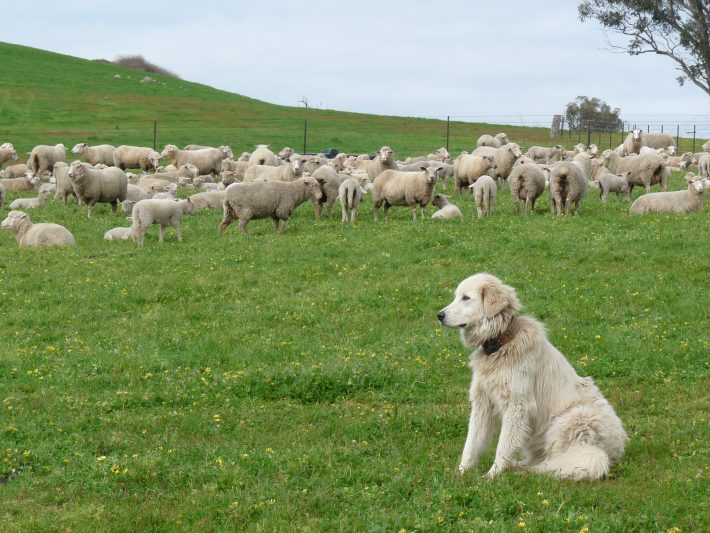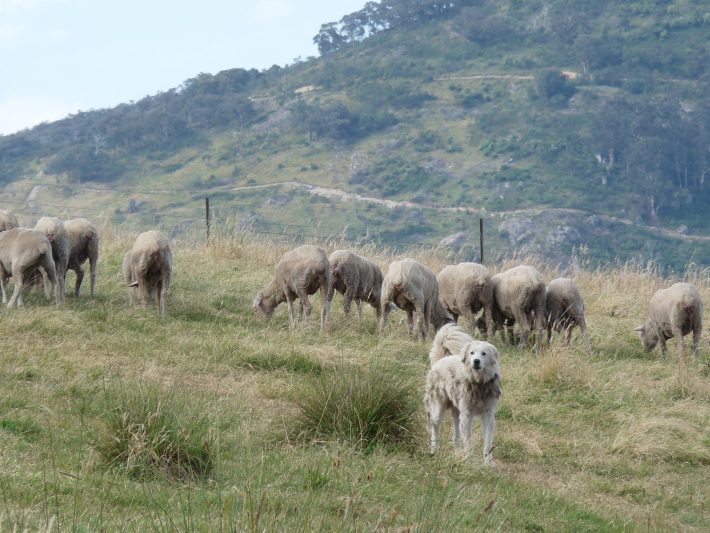Livestock guardian dogs create landscape of fear for predators
A new study reveals how Livestock Guardian Dogs change predator behaviour in ways that both protect livestock and support conservation efforts.

Led by researchers at the University of Tasmania, Zoos Victoria, and the University of Melbourne, the study, published in Ecological Solutions and Evidence, uncovers the pivotal role of Livestock Guardian Dogs (LGDs), particularly Maremma sheepdogs, in reshaping red fox behaviour in north-eastern Victoria.
“The study shows that from an ecological viewpoint, the effect of LGDs on foxes is similar to a landscape of fear imposed by large wild predators,” said lead researcher Dr Linda van Bommel.
“This shows that we can use these dogs to help us manage the impact of predators in many different situations. By protecting livestock, LGDs can help mitigate conflict between farmers and predators, offering a humane and effective alternative to lethal control methods.”
Crucially, the study shows that Maremmas allow wild predators to coexist with farming. This offers a solution to a problem that governments, conservationists and farmers face all over the world, wherever livestock and predators interact. Farmers need to protect their livestock but the predators that kill livestock are often themselves threatened species in need of protection.
“Our study shows that guardian dogs make it possible for livestock and wild predators to share the same landscapes without conflict.” said Dr Christopher Johnson, co-author of the research.

The study also shows that LGD use could result in less predation on native species which could help support efforts to preserve Australia’s unique biodiversity.
“If foxes are more wary and spend less time hunting when Maremmas are around, that means that species of small wildlife that are threatened by foxes should be safer in places with Maremmas,” added Dr Johnson. “Therefore, sheep farmers will be able to keep more biodiversity on their farms if they use Maremmas to protect their sheep.”
In addition to reducing conflicts between farmers and predators, LGDs can also improve the welfare of livestock and decrease stress in farming communities. “The presence of LGDs gives peace of mind to farmers, knowing that predator attacks on livestock are unlikely to occur,” said Dr van Bommel.
“This alleviates stress for both the livestock and the livestock owners, contributing to improved animal welfare and the sustainability of farm businesses.”
In the study, the researchers used GPS tracking to map the activities of LGDs and remote cameras to measure fox activity across the study areas. The researchers also monitored risk-sensitive foraging behaviours in foxes to see if they reduced feeding time at sites regularly used by LGDs.
Read the full research paper
, , , & (2024). Livestock guardian dogs establish a landscape of fear for wild predators: Implications for the role of guardian dogs in reducing human–wildlife conflict and supporting biodiversity conservation. Ecological Solutions and Evidence, 5, e12299. https://doi.org/10.1002/2688-8319.12299
Like what we stand for?
Support our mission and help develop the next generation of ecologists by donating to the British Ecological Society.